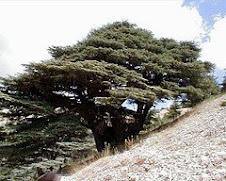Story from TheStar.com:
Geothermal Power offers huge potential to replace oil and natural gas
Canada has significant `earth energy' potential, but critics say it's not doing much about it
By Tyler Hamilton, Toronto Star Energy Reporter
Canada's obsession with "clean coal" and carbon capture technologies has left it blind to the vast potential of its own geothermal resources, says the head of one of the country's few publicly traded developers of geothermal power.
Gary Thompson, chief executive of Sierra Geothermal Power Inc. of Vancouver, said the neglect has left Canada a laggard among peers who view emission-free geothermal power as a strategic part of their electricity mix.
"We're one of the few countries with significant geothermal potential that's not doing anything about it," said Thompson, adding that the federal government has shown little interest, despite calls for more study. "It's rather disconcerting. They've really been letting Canadians down."
Thompson recently became vice-chair of the Canadian Geothermal Energy Association in Calgary. He said he joined because geothermal "is not getting any love" in Canada and he wanted to create more public awareness of the potential.
It's a suggestion Natural Resources Canada disputes. "The Government of Canada supports increased supply of clean electricity from renewable sources, including geothermal," said department spokesperson Héloïse Perron, citing a government ecoENERGY program that supports up to 4,000 megawatts of electricity development from geothermal, wind, solar and other renewable power systems.
Critics, however, say the inclusion of geothermal power under a general program designed around renewables is not akin to specifically backing research and development of the resource.
"It's really a shotgun approach," said Michal Moore, former chief economist at the U.S. National Renewable Laboratory and a senior fellow at the University of Calgary's Institute for Sustainable Energy, Environment and Economy.
Moore co-authored a study released last week, mostly focused on Alberta, that recommended geothermal be "subject to a co-ordinated and multi-faceted ongoing research program." It concluded that next-generation geothermal technologies could reduce or substitute for proposed clean coal or nuclear plants "at competitive prices."
But Thompson said more groundwork is needed. He said the association's first goal is to have Natural Resources Canada, through the Geological Survey of Canada, invest in a thorough assessment of the country's geothermal potential – something that hasn't been done in more than two decades. It's also preparing a policy white paper that will break down myths that have hindered development of the resource.
"A lot of politicians just don't understand it," Thompson said.
"In their view it has no potential."
Meanwhile, billions of dollars are being put into unproven technologies aimed at giving the oil sands and coal industry a greener image, he said.
Last week, Alberta Premier Ed Stelmach announced plans for a $2 billion fund that would accelerate development of carbon capture and storage technology.
The geothermal power plants tap hot temperatures kilometres below the surface to create steam that spin turbines that generate electricity.
Conventional geothermal, or earth energy, facilities tend to be located in countries, including Canada, that lie along the so-called Ring of Fire – a region with shallow heat.
Though out of date, estimates for potential in Canada range from 3,000 to 6,000 megawatts, much higher as drilling and engineering costs fall.
Thompson's company has focused its efforts on Nevada because of U.S. incentives that help fund early drilling costs.
The U.S. also offers a production tax credit of two cents per kilowatt-hour, while Canada offers one cent.
"I had done a lot of research in Canada and after several years ended up banging my head against the wall," said Thompson, recalling the difficulty of getting support.
"We ended up looking at projects stateside."
It's a similar story for Nevada Geothermal Power Inc., Polaris Geothermal Inc. and Western GeoPower Corp., all Canadian-based companies that have done most of their development outside of Canada.
The only commercial geothermal power initiative under development in Canada is Western Geo's South Meager project in B.C.
Germany, on the other hand, is forging ahead with next-generation "enhanced geothermal" that will make it possible to develop the technology in more locations around the world.
In the U.S., the Department of Energy last month pledged to invest up to $90 million (U.S.) over four years into research related to enhanced geothermal systems.
More info: Geothermal Energy Investing
Revolutionary Third World Leaders Praise China’s World Role
-
China is a modern superpower, as is the US, but a qualitatively different
superpower. The US uses military aggression, coups, and sanctions to impose
US ...
9 hours ago


